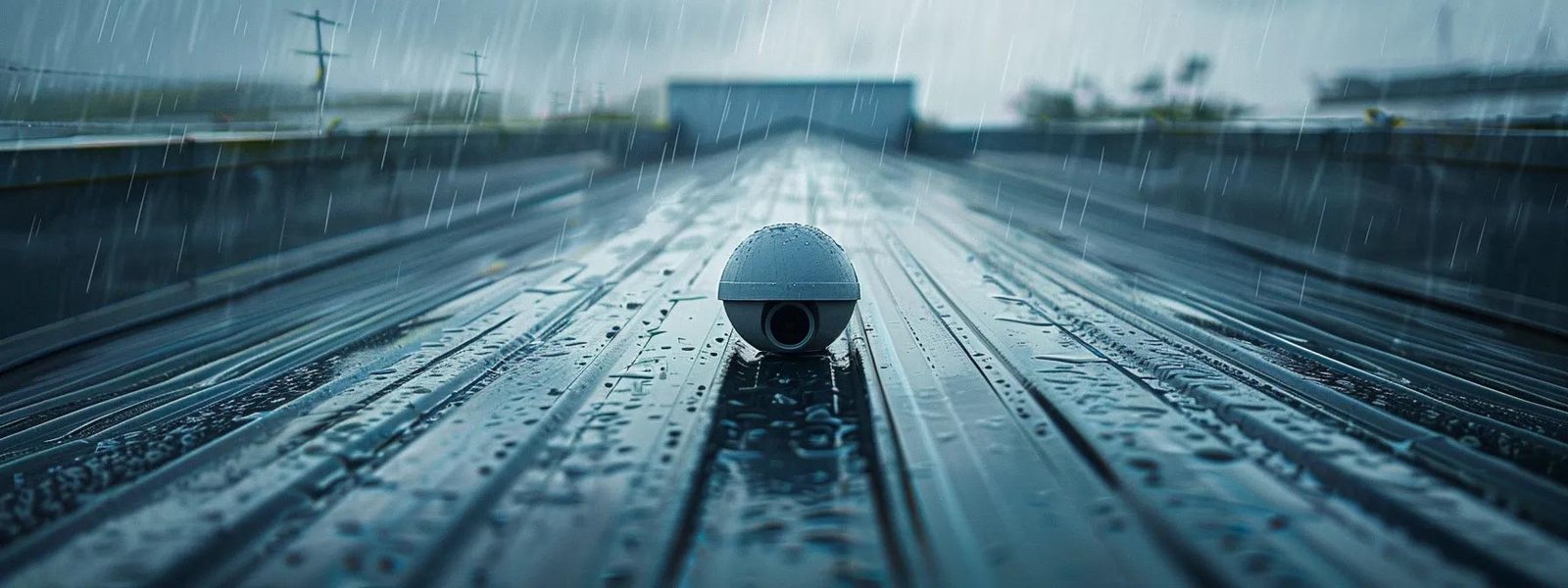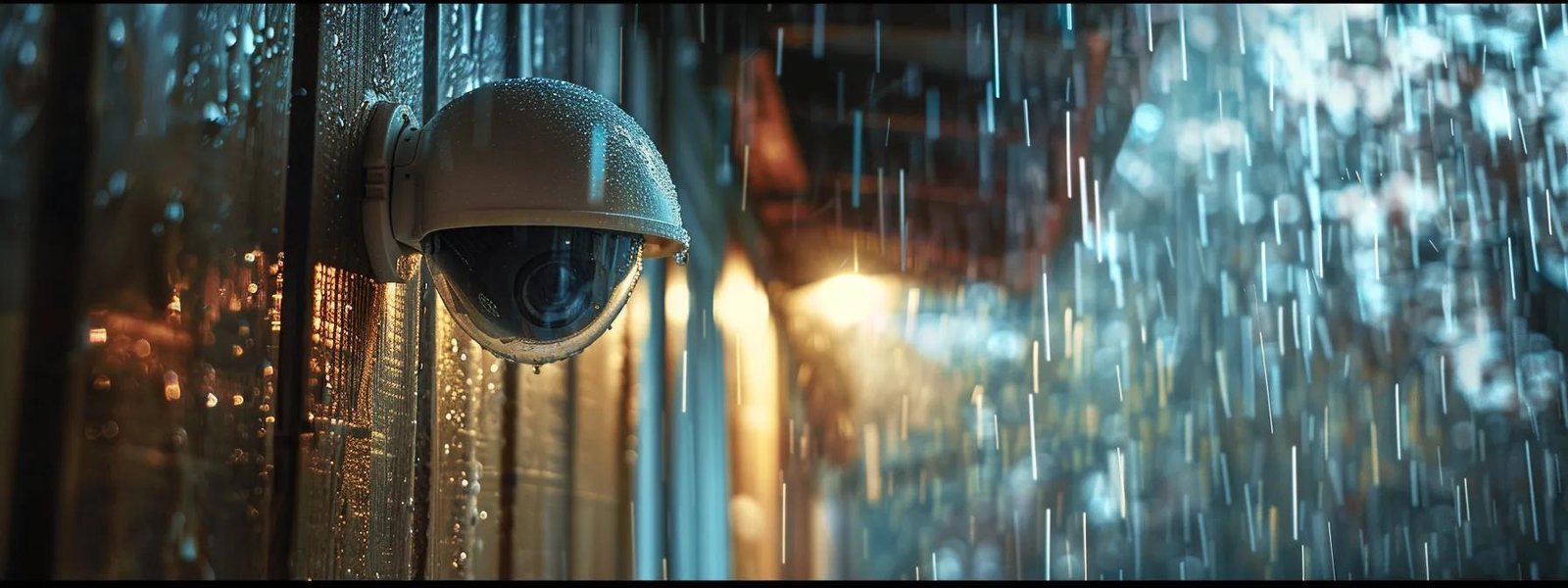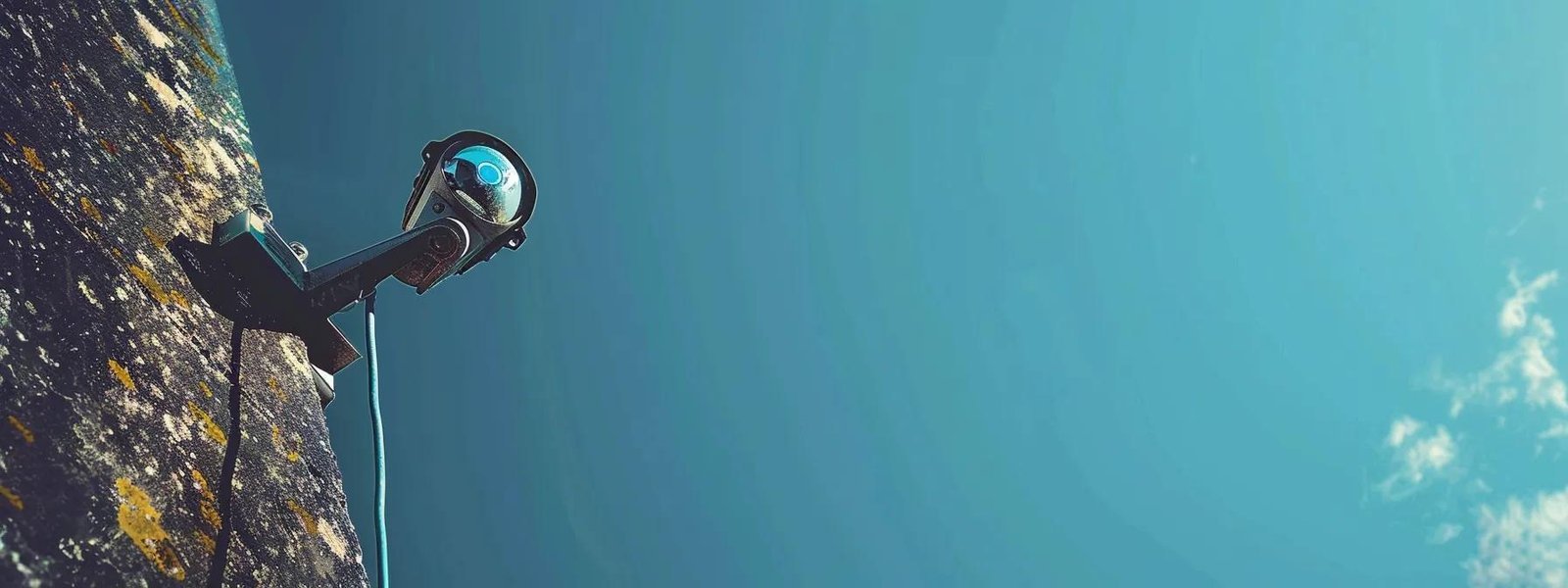
Are your outdoor security cameras struggling to perform in harsh weather? Many homeowners face this issue, leading to gaps in their security solution. This guide will cover the importance of weatherproofing your outdoor security cameras, how to choose the right models, and best practices for installation. By following these tips, you can ensure your cameras remain effective year-round, protecting your home and providing peace of mind. Don’t let weather-related problems compromise your security system; learn how to maintain your cameras and troubleshoot common issues effectively.

Weatherproofing outdoor security cameras is essential for protecting your investment from the elements. Weather can significantly affect the performance of surveillance cameras, especially those installed on doors or porches. Ignoring weatherproofing measures can lead to costly repairs and compromised security. This section will cover how to safeguard your DIY security setup, including electrical diagnostics, the impact of weather on wireless cameras, and the risks associated with inadequate protection.
Protecting outdoor security cameras from the elements is crucial for maintaining effective home security. Cameras mounted at a height on walls can be particularly vulnerable to rain, snow, and extreme temperatures, which can affect their performance and longevity. By investing in weatherproofing measures, homeowners can ensure their network security remains intact, safeguarding their property and enhancing their overall home improvement efforts.
Weather can significantly impact the performance of security cameras, affecting their power supply and overall functionality. Extreme temperatures can cause cameras to malfunction, while moisture can lead to corrosion and connectivity issues, disrupting the security camera systems. Additionally, poor weather conditions can limit the field of view, making it difficult for cameras to capture clear images, which can compromise home security.
Ignoring weatherproofing measures for outdoor security cameras can lead to significant risks that compromise home security. Without proper protection, cameras may experience reduced frame rates and impaired night vision due to moisture and temperature fluctuations, making it difficult to capture clear images. Additionally, inadequate weatherproofing can affect the authentication process of the camera system, leaving homeowners vulnerable to security breaches and potential property loss.

When selecting weatherproof security cameras, homeowners should focus on key features that ensure durability and performance. Understanding IP ratings is essential, as they indicate a camera’s resistance to dust and water. Additionally, choosing cameras suitable for specific climate conditions will enhance reliability. This section will provide insights into these critical aspects, including the importance of internet access, router compatibility, and surge protectors for optimal functionality.
When selecting outdoor security cameras, homeowners should prioritize features that enhance both durability and functionality. Key aspects include a reliable mobile app for remote access, which allows customers to monitor their property in real-time. Additionally, cameras with regular firmware updates ensure that the physical security of the home remains robust against potential vulnerabilities, providing peace of mind for homeowners.
Understanding IP ratings is crucial when selecting weatherproof security cameras for effective home protection. These ratings indicate a camera’s resistance to dust and water, which is essential for maintaining functionality in various weather conditions. For instance, a camera with an IP67 rating is completely dust-tight and can withstand immersion in water, making it a reliable choice for homeowners looking to enhance their ADT home security system with robust waterproofing solutions.
Selecting outdoor cameras that are suitable for specific climate conditions is vital to minimize the risk of equipment failure. Homeowners should consider cameras with robust weatherproof ratings and features like a user-friendly graphical user interface for easy monitoring. Additionally, ensuring that the video surveillance system includes strong encryption will protect against unauthorized access, providing peace of mind while safeguarding property in various weather scenarios.

Applying protective coatings and seals is essential for safeguarding outdoor security cameras against harsh weather. Installing weatherproof housings and shields further enhances durability, while temperature-control solutions are vital for extreme climates. These measures ensure that infrared and doorbell cameras within home security systems remain functional and secure from malware threats, providing reliable intelligence for homeowners.
Applying protective coatings and seals to outdoor security cameras is a vital step in minimizing vulnerability to harsh weather conditions. These coatings can help prevent moisture from entering the camera housing, which is crucial for maintaining functionality, especially for devices that rely on power over ethernet. Homeowners should also ensure that the seals are intact around the camera’s IP address connections to protect against water damage and maintain a reliable home automation system.
Installing weatherproof housings and shields is a critical step in protecting outdoor security cameras from harsh weather conditions. These protective measures not only shield the camera’s sensor from rain and snow but also reduce glare that can impair image quality. Homeowners should ensure that the housings are compatible with their security system and user interface, allowing for seamless integration and effective port forwarding for remote access.
Using temperature-control solutions is vital for outdoor security cameras, especially in extreme climates where temperature fluctuations can affect performance. For instance, an IP camera like Arlo can benefit from built-in heating elements or external enclosures that maintain optimal operating temperatures, preventing issues such as motion detection failures or image distortion. By ensuring that cameras remain functional in harsh weather, homeowners can significantly reduce the risk of burglary and enhance their overall security system’s reliability.

Selecting optimal locations for outdoor security camera installation is crucial for effective surveillance. This includes securing wiring and connections against moisture, employing mounting techniques for enhanced stability, and positioning cameras to minimize environmental exposure. Additionally, protecting cables with conduits and junction boxes ensures durability. Each of these practices contributes to a reliable security system that homeowners can monitor via their mobile devices.
Selecting optimal locations for installing outdoor security cameras is vital for an effective home security system. Homeowners should consider areas with good visibility and minimal obstruction to ensure comprehensive coverage. Additionally, securing electrical wiring and connections against moisture is essential to prevent data breaches and maintain the integrity of the security camera system. By strategically placing cameras, users can enhance their surveillance capabilities while protecting their property from potential threats.
Securing wiring and connections against moisture is a critical step in weatherproofing outdoor security cameras. Homeowners should use weather-resistant conduits and junction boxes to protect electrical connections from rain and humidity, which can lead to automation failures and increase the risk of theft. Additionally, ensuring that cables are properly sealed and positioned away from fences or other obstructions enhances accessibility and reduces the likelihood of damage, allowing for high dynamic range performance in various lighting conditions.
Proper mounting techniques are essential for ensuring the stability of outdoor security cameras, especially in areas prone to severe weather or lightning. Homeowners should securely fasten cameras to walls or poles using weather-resistant screws and brackets, which can help prevent damage from strong winds or heavy rain. Additionally, ensuring that wires are properly routed and protected from exposure will enhance the reliability of the entire system, including devices like Google Nest, and maintain a strong connection to the network switch, contributing to a seamless internet of things experience.
Positioning outdoor security cams to minimize environmental exposure is crucial for maintaining their functionality and effectiveness. Homeowners should install cameras in locations that provide adequate shelter from harsh weather conditions, such as under eaves or awnings, while ensuring they have a clear line of sight for optimal surveillance. Additionally, securing ethernet connections and utilizing cloud storage for video footage can enhance the reliability of motion detection features, ensuring that the cameras remain operational and effective in protecting the property.
Protecting cables with conduits and junction boxes is a vital step in ensuring the reliability of outdoor camera systems. By using weather-resistant conduits, homeowners can shield their wiring from moisture and physical damage, which is especially important for installations near driveways where vehicles may pose a risk. Additionally, junction boxes help organize connections and maintain a secure operating system, preventing potential disruptions in the subnet that could compromise the functionality of the security cameras.

Maintaining weatherproofed outdoor security cameras year-round is essential for ensuring their effectiveness and longevity. Regular cleaning helps remove debris and buildup that can obstruct the camera’s view. Inspecting equipment after severe weather events is crucial to identify any potential damage. Updating software enhances performance, while scheduling preventative maintenance checks ensures the system remains reliable. Each of these practices contributes to optimal security camera functionality.
Regular cleaning of outdoor security cameras is vital for maintaining their effectiveness and ensuring clear image capture. Over time, debris such as dust, leaves, and bird droppings can accumulate on the camera lens, obstructing the view and compromising surveillance quality. Homeowners should schedule routine cleanings, using a soft cloth and mild cleaning solution to gently wipe the lens and housing, ensuring that the cameras remain functional and reliable in all weather conditions:
After severe weather events, it is crucial for homeowners to inspect their outdoor security cameras to ensure they remain functional and effective. This includes checking for any physical damage, such as cracks in the housing or misalignment of the camera angle, which can compromise surveillance quality. Additionally, verifying that all seals and connections are intact will help prevent moisture ingress, maintaining the integrity of the security system:
Updating software for outdoor security cameras is essential for maintaining optimal performance and security. Regular software updates can enhance camera functionality, fix bugs, and improve security features, ensuring that the system remains robust against potential vulnerabilities. Homeowners should set reminders to check for updates or enable automatic updates, allowing their security cameras to operate efficiently and effectively, providing peace of mind in protecting their property.
Scheduling preventative maintenance checks for outdoor security cameras is vital for ensuring their long-term functionality and reliability. Homeowners should set regular intervals, such as every six months, to thoroughly inspect their cameras for any signs of wear or damage. This proactive approach not only helps identify potential issues before they escalate but also ensures that the weatherproofing measures remain effective, ultimately safeguarding the home and enhancing overall security.

Troubleshooting common weather-related issues is essential for maintaining the effectiveness of outdoor security cameras. This section will cover how to identify signs of water damage or leakage, address image quality problems caused by weather conditions, and provide solutions for ice and snow accumulation. Additionally, it will discuss when to consult a professional technician for more complex issues, ensuring homeowners can keep their security systems operational.
Identifying signs of water damage or leakage in outdoor security cameras is crucial for maintaining their functionality. Homeowners should look for visible moisture inside the camera lens or housing, which can indicate a breach in weatherproofing. Additionally, any corrosion on the camera’s connectors or cables can signal potential water damage, compromising the security system’s effectiveness. Regular inspections can help catch these issues early, ensuring that the cameras remain operational and reliable in protecting the property.
Addressing image quality problems due to weather is essential for maintaining effective outdoor security cameras. Rain, snow, and fog can obscure the camera lens, leading to blurry or unclear footage. Homeowners should regularly clean the camera lens and ensure that protective coatings are intact to minimize these issues. Additionally, positioning cameras under eaves or awnings can help shield them from direct exposure to harsh weather, enhancing image clarity and ensuring reliable surveillance.
To effectively manage ice and snow accumulation on outdoor security cameras, homeowners should consider using heated camera enclosures or protective covers designed to prevent freezing. Regularly clearing snow and ice from the camera lens and housing is also essential to maintain clear visibility and optimal performance. Additionally, positioning cameras under eaves or awnings can help shield them from direct snowfall, reducing the likelihood of ice buildup and ensuring reliable surveillance throughout winter months.
Homeowners should consider consulting a professional technician when they encounter persistent issues with their outdoor security cameras that they cannot resolve on their own. Signs such as frequent malfunctions, water damage, or significant image quality problems may indicate deeper issues that require expert intervention. Engaging a qualified technician ensures that the security system is properly assessed and repaired, maintaining the effectiveness of the weatherproofing measures in place:
Weatherproofing outdoor security cameras is vital for maintaining their performance and longevity against harsh weather conditions. Homeowners must prioritize protective measures, such as selecting the right cameras, applying protective coatings, and ensuring proper installation to safeguard their investment. Regular maintenance and inspections further enhance the reliability of these systems, ensuring effective surveillance year-round. By taking these steps, homeowners can significantly improve their security and protect their property from potential threats.


